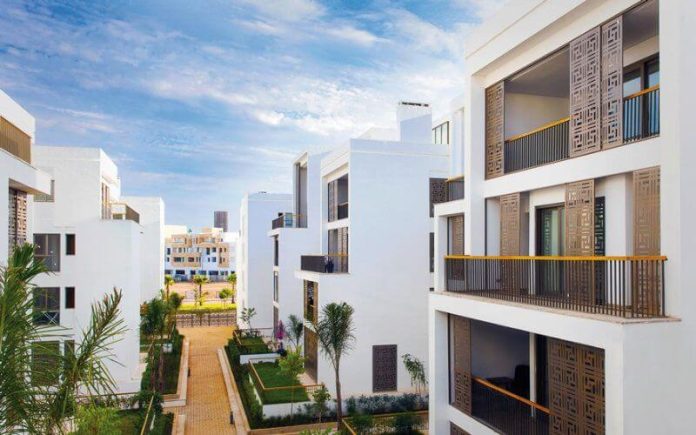The relationship between monetary policy and real estate prices in Morocco has long been overlooked, despite the sector’s growing influence in the national economy. A new study by Hassnae Hammou Ou Ali, a researcher at Bank Al-Maghrib, sheds light on how shifts in interest rates shape property values—offering rare empirical insights based on data spanning from 2006 to 2024.
Using a structural vector autoregression (SVAR) model, the study explores the delayed impact of monetary decisions on real estate prices. The findings confirm that rate hikes do indeed put downward pressure on property values, though the effects take time to materialize—underscoring the structural rigidity of Morocco’s housing market.
Specifically, a 12-basis-point increase in the one-year Treasury bill rate leads to an estimated 0.3% drop in real estate prices—noticeably delayed, occurring about six quarters later. Similarly, a 10-basis-point rise in the average interbank rate results in a 0.35% decline in prices over the same timeframe. These modest yet measurable effects highlight the real estate sector’s sensitivity to credit conditions, while also pointing to a sluggish transmission mechanism.
Real estate is deeply entangled with Morocco’s banking system, accounting for over a quarter of all outstanding loans. In 2023, mortgage lending totaled 303 billion dirhams, with 243 billion allocated to residential housing. That number continues to grow, unlike financing for developers, which has remained stagnant at around 55 billion dirhams since 2012.
Islamic financing options like “Murabaha immobilière” have added further momentum to home loans, expanding by 16% between 2023 and 2024 to reach 25 billion dirhams. This growth has been driven in part by government-backed housing initiatives such as “Fogarim” and “Daam Sakane,” which aim to make homeownership more accessible for low- and middle-income families.
Despite the turbulence of the 2020 pandemic, the housing market proved resilient. Annual residential transactions have remained relatively strong, fluctuating between 90,000 and 160,000 deals. However, commercial and land segments remain less dynamic. After years of decline, real estate prices stabilized in 2023, helped by renewed economic optimism, a surge in remittances from Moroccans abroad, and the high-profile announcement of Morocco co-hosting the 2030 World Cup.
Ultimately, the study concludes that monetary shocks do affect property prices, but only moderately and with a significant time lag. This delay stems largely from the structure of the Moroccan housing market, which is still dominated by fixed-rate loans, limited access to mortgage credit, and a sizable informal sector—all of which blunt the immediate impact of interest rate changes.
The research calls on policymakers to tailor their approach to these domestic realities. In a country where financial stability increasingly hinges on the health of the property market, a more nuanced and locally informed strategy may be essential for managing future risks and steering sustainable growth.





